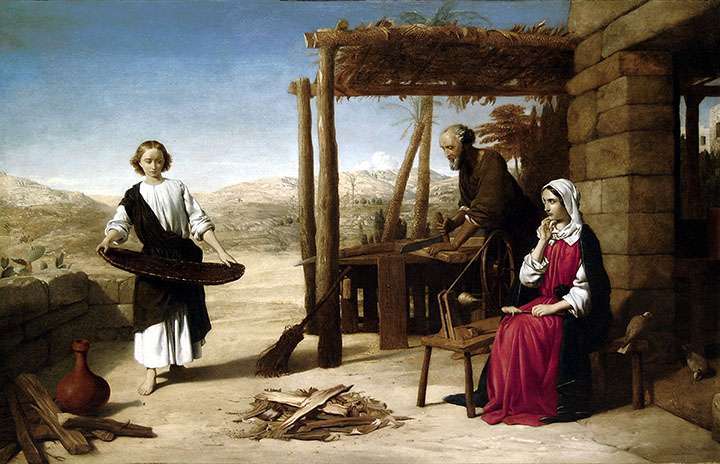Nineteenth-century British painting witnessed a plethora of artistic styles that hearkened back to earlier time periods. In Our Saviour Subject to His Parents at Nazareth, John Rogers Herbert, a forerunner of the notable Pre-Raphaelite style, emulated the extensive detail and fastidious observation seen in the works of early Renaissance painters. What details in this work contribute to its believable subject and setting? Less than 50 years later, Bernard Sleigh rejected this style in favor of the flattened, mystical style of the medieval period. How does his historically later version of The Crucifixion: A Triptych, seem anachronistic?
John Rogers Herbert (1810–1890) Our Saviour Subject to His Parents at Nazareth
Purchased with funds provided by Jack R. and Mary Lois Wheatley

Bernard Sleigh (1872–1954) The Cruxifiction: A Triptych
Purchased with funds provided by Verla Birrell and Campbell Foundation

YOU MAY NOTICE
In order to convey a historically accurate scene, Herbert traveled to the Holy Land to become more familiar with the landscape and architecture that had served as the backdrop for Christ’s life. Emphasis on the setting as well as the subject of the artwork enabled viewers to feel a greater affinity for these Biblical events.
Sleigh’s work is an early 20th-century triptych, or tri-part altarpiece, typical of the medieval era. The physical setting is vague and its geographic location unclear. People from different time periods–including soldiers, kings, judges, and prisoners–gather to kneel before their king. This artwork is a reminder of the timeless Christian doctrine that regardless of worldly station, all are equally in need of salvation.